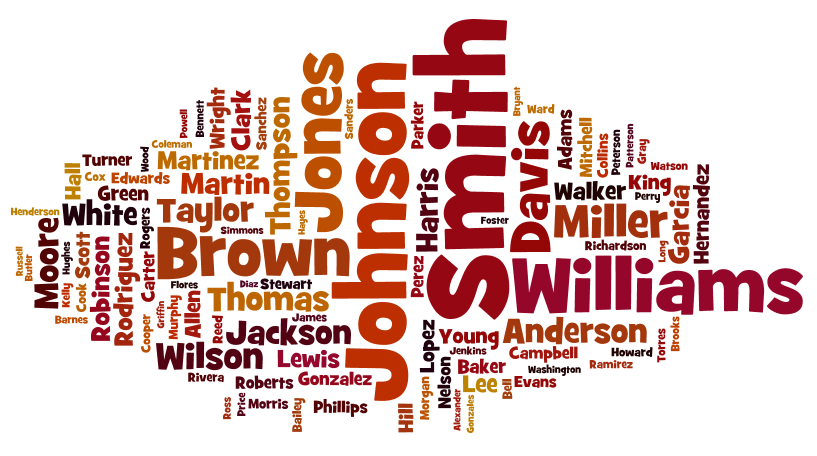 |
| Image courtesy Behind the Surname |
STRATEGIES
- Always, ALWAYS start with yourself and carefully work backward into the past, one generation at a time. Don't skip any information. Document all information that you think you know. Don't leave any resource unchecked.
- Create a profile of your farthest back ancestor that details every bit of information that you know about him, or her, so that you can pick him out in a crowd of like named people. Know where he died and is buried, know all the places he lived in his life. Know his wife, siblings and children. His occupation. Where his land was. EVERYTHING.
- Research his community, often called his FAN club - his Family, Associates, and Neighbors. People tend to move and act along with others. Look at their wills, land records marriages and births.These "others" could provide clues to your ancestor's life.
- Focus on the location where you know your ancestor lived. This narrows your focus considerably.
- Research everyone with the same surname in a locality. You might find a link to your family.
- Identify someone in the family with a unique first name. This will help distinguish your ancestor from others of the same name. America MASON helped me trace my William MASON.
- Create spreadsheets and charts to track all the people with the same name in the same area. This helps you keep them separate. I used an Excel spreadsheet to tease out which of the 3 Thomas Barry's in Noble County Ohio was my ancestor.
- Land Records - tracing the passing of land from one generation to the next helps prove ancestry. This method was used to prove that my William P. Williams, husband of Rebecca (TAGG) Williams was the son and heir of John Williams of Gallia County, Ohio and supported my entry into First Families of Ohio.
- Tweaking your searches. When possible, use Boolean search techniques to refine your search. This works when using Google and some databases:
- If the surname is the same as a place, color, thing, occupation, use the "-" limiter to narrow your results. Berry -Straw will eliminate the fruit. Mason -stone will eliminate the occupation, etc.
- Use the Exclude Words and Include Words fields to eliminate common phrases. Not all databases offer this search field
- Quotation marks to create a phrase "William H. MASON" to search for an individual. Not all databases search boxes allow special characters like quotation marks and periods.
- Add a location or time period.
- Use the "and", "not", and "or" Boolean operators. Ex. "Baker NOT Bread"
- Search using the common abbreviations for first names. Ex. "Jno" for John, "Geo" for George, "Wm" for William and "Jas" for James.
- Search using nicknames. Ex. "Billy", "Betty" and "Johnny" (My Dad's friends at work called him Johnny even though his first name was Lawson. "Johnny" came from his last name - Johnson.)
- DNA testing. You could use DNA testing to connect with others researching the same line.
- Be persistent and don't give up the search. You may have to let it rest for awhile, but always come back to the common name ancestor.
- "Any Tips for Tracing an Ancestor With a Common Name?", The Root, Henry Louis Gates Jr. Web. 22 May 2015. 13 Feb. 2019.
- "Common Surnames in the United States." Behind the Surname, Mike Campbell. Web. 13 Feb. 2019.
- "First Families of Ohio (FFO)", Ohio Genealogical Society.Web. 13 Feb. 2019.
- "Genealogy Case Study; Researching Common Surnames Online", Family Tree Magazine. Nancy Hendrickson. Web. 11 Feb. 2014. 14 Feb 2019.
- "How to Research Your Common Surname Ancestors", Are You My Cousin? Lisa Lisson. 13 Feb 2019.
- "List of most common surnames in North America." Wikipedia, The Free Encyclopedia, 1 Feb. 2019. Web. 13 Feb. 2019.
- "Refining Google Surname Searches", Family Tree Magazine, Nov. 2010, pp. 70-71. Web. 13 Feb 2019.
- "Tips to Find Ancestors with Frustratigly common Surnames", Ancestral Findings. Web. 14 Feb. 2019.






















